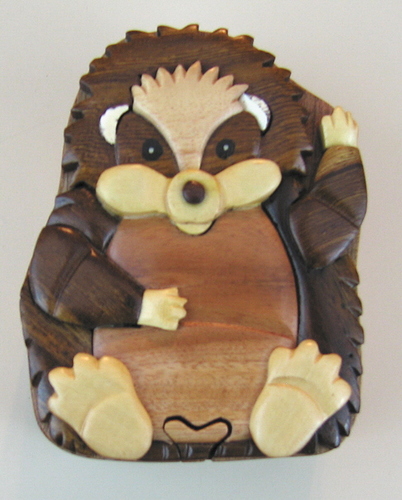While I was working on the Quilt Block Key Holder there were a couple of requests to show how I was testing the results of various power and speed settings on the core, and it’s interesting enough to see what goes on inside.
Couple of things to be aware of when you’re lasering thick foamcore:
1. Watch it when you do. Do not leave it unattended under ANY circumstances.
The foam inside the paper backings melts, and it can actually burn with real flames inside the closed paper when you are working on path junctions where the air can get down to it from a previous cut. The air assist cannot put that out…it can’t reach it through the surrounding foam.
.
.
.
Each of those is an example where the foam was secretly burning inside the core, on fairly low power settings, because there was air feeding in from previous cuts. I came pretty close to losing control of it and not even realizing. The surface paper was hiding the flames. (It was glowing brightly with flickers of flame coming out of the holes…be careful. Even with low power settings.
2. You can see that the interior damage caused by the laser is MUCH greater than what you see on the surface of the foamcore. It’s very hard to cut all the way through half inch foamcore without carving a big honking hole in the foam first. (And I did experiment with different focal points as well as power and speed settings.)
The problem is, the higher power settings needed to punch all the way through the half inch foamcore tend to melt and torch the foam inside and dissipate out rather than going down. It just eats more foam away instead of continuing down. (And runs a real risk of fire.)
So for cutting through the back paper, it really works better to just run an Exacto knife around the easy-to-follow path that the surface lasering leaves.
Some very light settings leave a very big hole in the foam:
Okay, so for testing, I just created a little file that had a bunch of single lines, each one a different color, so that I could set each line up with different power, speed and focal point settings.
Once the cuts were completed, I sliced right down the middle of the cuts (with a blade, not the laser) to look at the profile each power and speed setting made in the foam.
I jotted the settings down next to each line, and I’ll just keep those little squares of foam for reference.
(By the way - i know these are going to change with the final machine settings, so I’ll run a final set once i get my forever machine. If you want to recreate the test, you 'll need to create some props to set the thick foamcore on - this particular kind is too tall for the crumb tray. Try to get some foamcore under 0.433 inches thick if you want to just use the tray.)
That’s it! 
Edit: Note…do NOT try to use the settings showing on those foam blocks, the scale has changed significantly and you will create a 

 I totally must be hungry.
I totally must be hungry.



